It’s a common axiom in strength sports circles that you are only as strong as your weakest link. In many sports, the connection to your major movements is through your hands. This is particularly true when training with barbells.
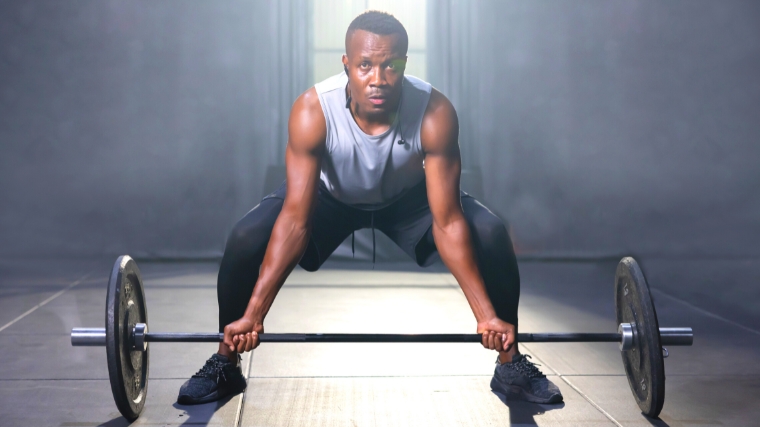
Your grip can make all the difference between a successful lift and a failed attempt. If you’ve ever cast about looking for a way to improve your grip strength, you might have stumbled across a pair of fat grips in your gym. These thick cylinders are meant to slip and secure around barbells or dumbbells to increase the diameter — and with it, the challenge to your grip.
Read on to find out if it’s worth the extra effort to wrap your fingers around fat grips during your regularly-scheduled exercises. Find out how to use fat grips in your training and if it can help you reach your goals.
- What Is Fat Grip Training?
- How to Use the Fat Grip
- Benefits of Fat Grip Training
- Potential Drawbacks of Fat Grip Training
- Best Uses for Fat Grip Training
- Alternatives to Fat Grip Training
- Fat Grip Safety Tips
What Is Fat Grip Training?
Fat grip training involves securing thick cylindrical covers — usually made of rubber — around the handle of a barbell, dumbbell, or even a kettlebell. The goal is to increase the diameter of the handle, forcing your hand to work harder to hold onto a wider implement.
Gym equipment can come in all sorts of sizes, depending on your sport. For example, different barbells tend to run between 28 to 32 millimeters in diameter. Applying a fat grip would increase the diameter of the barbell, with different brands and sizes offering different levels of thickness.
Using a fat grip makes the exercise much harder, as it becomes much more challenging to hold and grip the bar. Think of the difference between a regular barbell deadlift and deadlifting with an axle barbell, which is generally twice as thick as an average barbell. With an axle deadlift, it’s much harder to hold onto the bar.
You might also consider the difference between picking a thin weight plate off the ground versus a thicker bumper plate. With the latter, your hand just has less to grab.
Why bother with the extra effort? Using a fat grip may allow you to build more muscle and strength due to increased activation in your arms. (1) Since a fat grip makes things harder, you definitely won’t be stronger in the moment — in fact, you will lift significantly less weight than you can with a regular barbell. (1)
Regardless, fat grips can enhance your training and lead to better overall gains in strength and hypertrophy. (1)(2)
How to Use the Fat Grip
Using the fat grip is quite simple. There are a few different kinds of fat grips on the market. In general, you’ll be able to snap the thin opening of the fat grip over the barbell, dumbbell, or whatever other cable attachment or exercise machine you’re applying it to.
While fat grips are generally fairly secure once they slip onto the bar, you’ll want to rotate it so that the opening is facing you.
Once the grips are on the particular piece of equipment, proceed to perform the exercise as you usually would. The only difference is the handle diameter is much larger. Depending on your hand size and the diameter, you will notice that your fingers will not wrap completely around the bar. This will force you to rely on your grip much more than normal.
Benefits of Fat Grip Training
If you’ve hit a deadlift plateau and are looking for a way to hold firmly onto the bar all the way through lockout — without lifting straps — you might want to get into fat grip training stat.
Increased Muscle Activation
The main benefit of using the fat grip is to increase muscular activation in your arms. While the research pertaining to fat grip usage is limited this intuitive conclusion does seem to hold true.
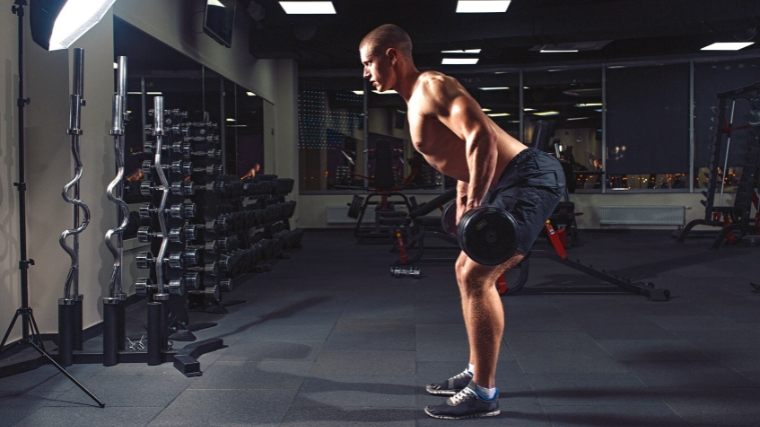
Research suggests that performing specific pulling exercises with a fat grip — namely, the deadlift, bent-over row, upright row, and concentration curl — can increase muscular activation of the forearms. (1) Another study has looked at golfers. Those who were using fat grips did end up having a significant difference in their left-hand grip strength, which led to increases in driving performances on the golf range. (2)
Sports Specificity
Depending on your sport, you may have to grip objects that have an increased diameter — looking at you strongwoman and strongman athletes. Research suggests that the more specific your training, the better your performance is likely to be in your sport. (3)
Sports like strongman and even CrossFit often make use of thick barbells like the axle bar. If your home gym or local CrossFit box doesn’t have access to this type of specialized barbell, fat grips can provide a cheap and easy way to simulate this specific kind of training.
Fight Off Plateaus or Weaknesses
Switching up the exercises within your program can help you bust through plateaus and improve your level of motivation across your program. Fat grips are a great — and simple — way to add variation without necessarily changing the exercises in your rotation.
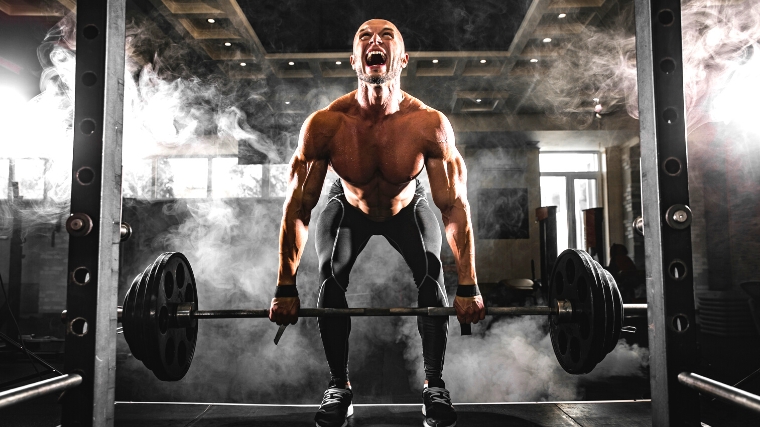
Using fat grips can completely change the focus of an exercise and allow you to focus on different aspects of your performance. For example, a concentration curl with a fat grip can shift the focus of the exercise from your biceps to your forearms. Using a fat grip on a deadlift can focus more on grip training versus an overall full-body workout.
If your forearms are lagging or your grip strength is holding you back from adding that fourth plate onto your deadlift, fat grips may be just what you need. You can raise the bar on your weak points and help make sure that you’re not going to fall behind in other aspects of your training.
Potential Drawbacks of Fat Grip Training
Fat grip training may seem like a no-brainer for athletes looking to hold onto a regular barbell more efficiently. That said, it’s not for everyone — nor is it effective for every stage of training.
Increased Muscular Fatigue
An increased diameter makes the lift much harder, which may be desirable if you’re looking to up the ante on your forearm training. That said, if you do this type of training early in your workout, your arms may give out way before the rest of your body does.
This strategy may yield more gains down the line, given that the goal may be precisely to increase the emphasis on your forearms and fingers. Still, the short-term impact may be unwanted if you’re trying to lift as much weight as possible during the current workout or if you can’t afford to pre-exhaust your forearms before more intensive parts of your training.
Technique Change
The way you perform a certain lift will change due to the different orientations of your hands. This can change the focus and intent of your exercise. These alterations can be better or worse for you, depending on your goals. In the deadlift, for example, you may round your back more as your grip gives out, or you might even drop the bar altogether.

If you’re coming up on a powerlifting meet, pulling deadlifts with fat grips or an axle bar may not be in your best interest. You want to be as specific as possible by training the precise lift you’ll be performing in a competition.
So while offseason fat grip training may be desirable, doing it too close to competition can throw your form off-kilter. This is especially true if you plan to pull with a mixed grip during your meet.
Decreased Overall Load
If you’re training for absolute strength, fat grip training can help raise the bar on your grip strength. This can ultimately carry over into heavier lifts. However, if you’re trying to give your body an overall higher training stimulus, fat grip training may not be your best bet.
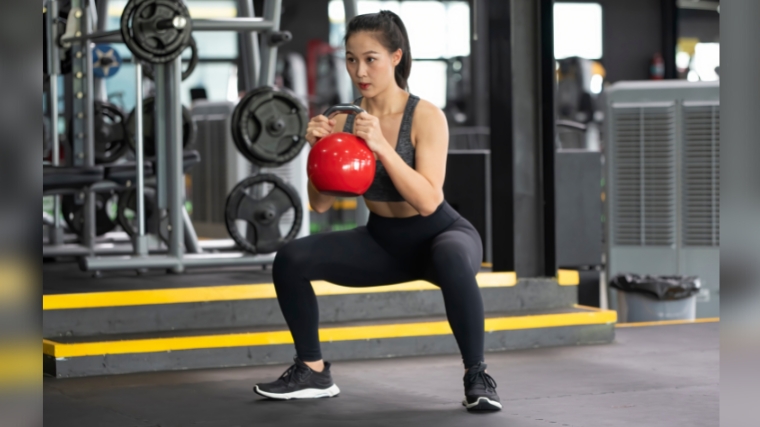
Despite fat grip training seeming to increase muscular activation of the forearms, lifters tend to move significantly less weight with fat grips. (1) The decrease can be extremely significant, with thicker grips decreasing deadlift weight by around 40 percent. (1)
However, it is worth mentioning that over a longer period of time, athletes can adapt and get better with the fat grip. (2) Still, the fact remains that if you want to stimulate your full body with compound movements as much as possible, fat grips reduce that capacity in the short term.
Best Uses for Fat Grip Training
The best uses for fat grip seem to be for sports-specific scenarios and lifts with lighter overall loads. Research suggests that if you want to lift maximal loads in the short term, it may be better to use fat grips for exercises such as curls over deadlifts. In one study, athletes lifted up to 40 percent less in the deadlift using a fat grip — but for a concentration curl, this was only five percent less. (1)
Some exercises that can benefit from fat grip training follow:
You can perform all your sets of these exercises with fat grips, or you can save the fat grip for your last burn-out set. Just because you’re using fat grips for one exercise doesn’t mean you have to do it for all of them. You can sprinkle this type of training into your program as needed or desired.
Alternatives to Fat Grip Training
There are many ways to train grip and target your forearms if that is your focus. If you don’t have access to fat grips or are simply looking to diversify your training style, here are some alternatives to fat grip training.
Regular Grip Training
You can always choose to add nothing special to your training implements. Even if you’re using a normal grip diameter — a naked barbell or dumbbell, for example — you can still make plenty of grip strength and forearm size improvements.
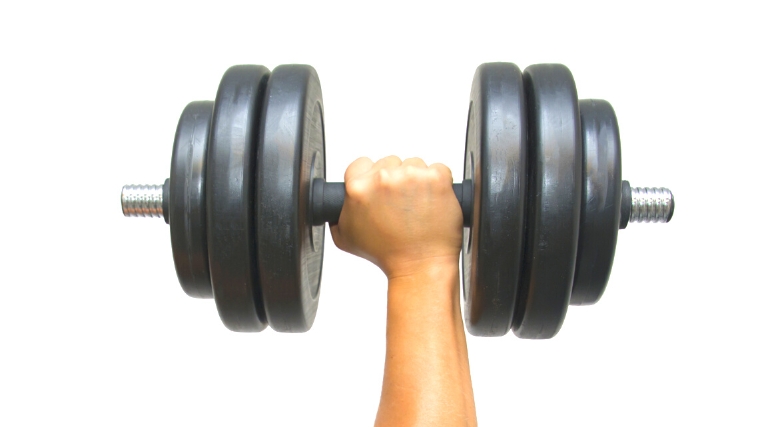
Using your regular implements, you can add eccentric training, holds, and carries into your routine to train your forearms and grip. Just because fat grips are effective doesn’t mean they’re the only effective method.
Hook Grip
If you find your barbell grip is giving out on you, the hook grip is often an option. The hook grip is a specific type of grip, most often used in weightlifting but also popular with powerlifters. This grip can help keep the bar extra secure in your hands.
To perform the hook grip, wrap your thumbs around the bar first. Then, wrap your fingers around your thumb. Your thumb will be sandwiched between your fingers and the bar. What this does is prevent any rotation of the bar, which is generally how a bar slips out of your hands when you lose grip. Many lifters traditionally use a mixed grip to combat this issue, but the hook grip allows lifters to be in the double overhand position.
Specific Grip Training Exercises
Farmer’s carries, heavy holds, grip trainers… the sky is the limit when you’re looking for options to increase your grip strength. Think about your goal when it comes to your desire to improve your grip strength.

You might want to hold onto your deadlift through lockout. You may also want to lift that sandbag and hold it to your chest as long as possible during heavy walks. You may also simply want to carry all the groceries upstairs from your car without taking two trips.
Whatever your goal, general strength and conditioning principles such as progressive overload will help you get stronger. However, opting for something more specific to your situation may be a good strategy.
Fat Grip Safety Tips
When using the fat grips, the lift does become harder. To accommodate this, start with a much lower weight than you usually perform the exercise with. Slowly work your way up from there.
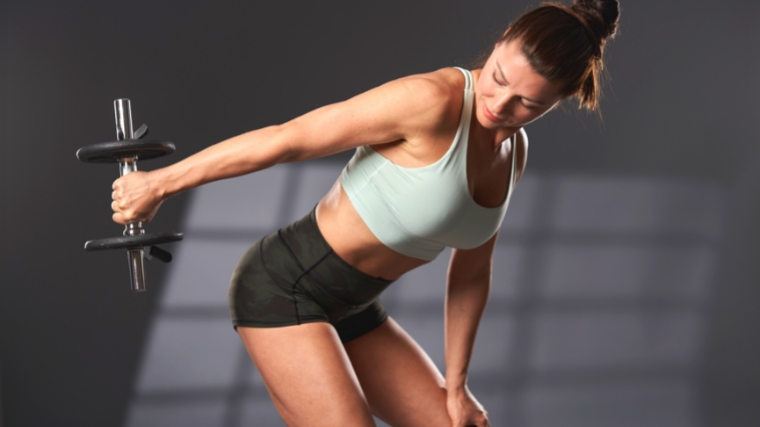
If you do decide to use the fat grip for presses like the overhead press or bench press, make sure you recruit the help of a competent spotter or safety arms. This will increase your safety if the bar slips out of your hands, given that your fingers will likely be unable to wrap all the way around the grip.
Try to be in an environment that is friendly to dropping weights and make sure no one is close by. There is a much higher chance of your grip giving out when you’re using fat grips, so prepare for a scenario where you may have to drop the weight.
Fat Grips on Everything?
In many cases, your grip is the foundation for a strong lift. Fat grips can be an option for training your grip, but remember that you still need to train hard and strategically. Focusing on proper programming, load management, and recovery will help you build a stronger grip no matter what kind of grip you choose.
Still, it seems that fat grips may well help you on your journey toward forging stronger forearms and grip. If your grip has become a limiting factor in your lifts — or if your forearms are that lagging part of your physique — you might want to snap some fat grips on the bar and get lifting.
References
- Krings BM, Shepherd BD, S wain JC, Turner AJ, Chander H, Waldman HS, McAllister MJ, Knight AC, Smith JW. Impact of Fat Grip Attachments on Muscular Strength and Neuromuscular Activation During R esista nce Exercise. J Strength Cond Res. 2021 Feb 1;35(Suppl 1):S152-S157.
- Cummings PM, Waldman HS, Krings BM, Smith JW, McAllister MJ. Effects of Fat Grip Training on Muscular Strength and Driving Performance in Division I Male Golfers. J Strength Cond Res. 2018 Jan;32(1):205-210.
- Fisher JP, Csapo R. Periodization and Programming in Sports. Sports (Basel). 2021 Jan 20;9(2):13.
Featured Image: Third TAC Fit @thirdtacsam / Instagram